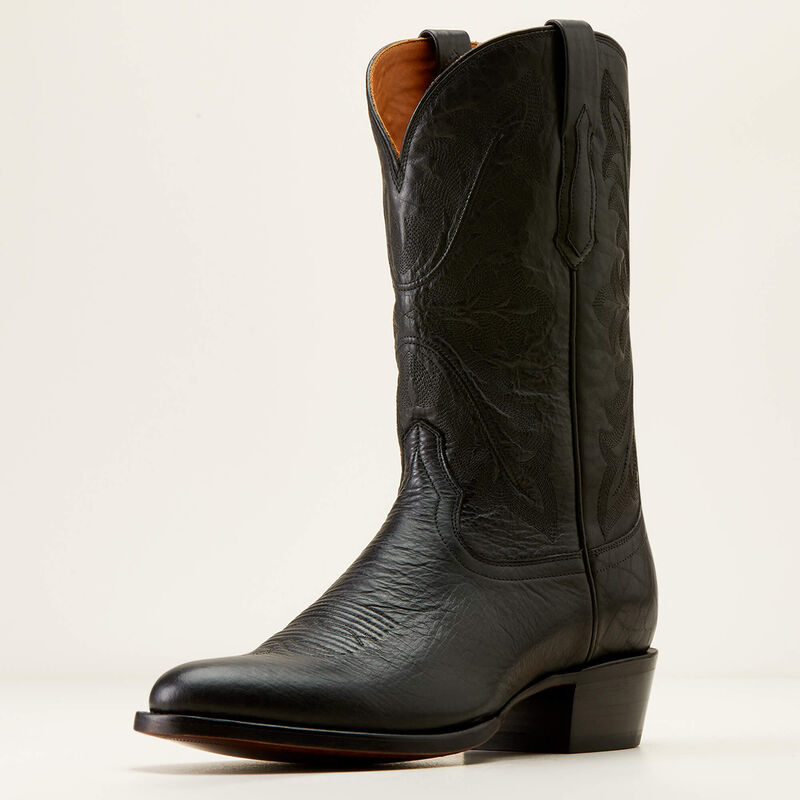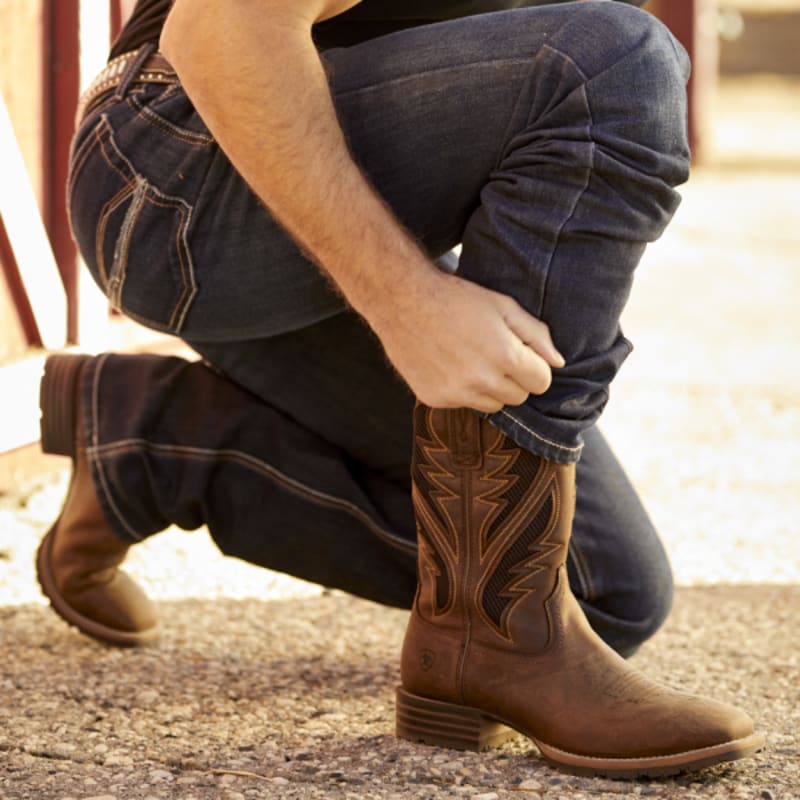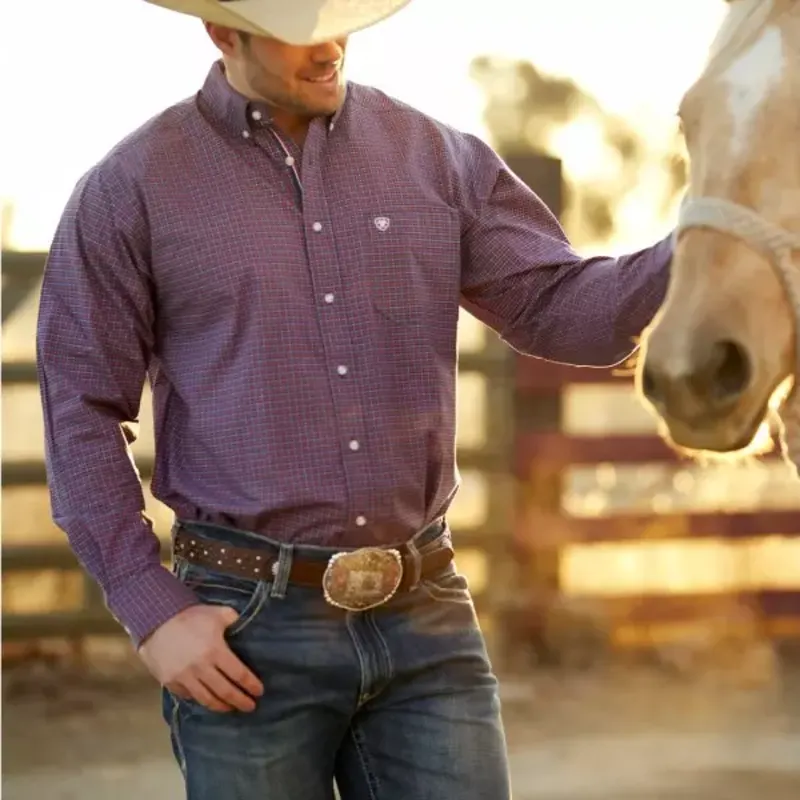
The Best Cowboy Boots for Line Dancing: A Complete Guide
Headed to a line dance but not sure which boots to dance in? This guide can help you pick a pair of dancing boots that will keep you on the floor all night long.
The best cowboy boots for line dancing combine comfort and Western style so you can move with ease all night long. Whether you’re brand-new to the dance floor or a seasoned two-stepper, the right pair will keep you on your feet, stylish, and ready to dance.
Do You Need Cowboy Boots to Line Dance?
Technically, no, you don’t need cowboy boots to line dance. Sneakers or casual shoes can get you through the steps, but cowboy boots add an authentic Western finish to your look, so you can fit in during a long night on the dance floor. They also pair effortlessly with jeans, making them as stylish as they are practical. If you really want to make the most of the experience, a well-fitted pair of boots is your best choice.
Indoor vs. Outdoor Line Dancing Boots
One of the biggest factors in choosing boots is where you’ll be dancing:
What’s the difference between leather soles and rubber soles for line dancing?
- On Indoor Dance Floors (wood or vinyl): Leather soles make it easier to glide, shuffle, and spin without sticking to the floor. If your dancing happens mostly indoors, look for boots designed with smooth soles.
- On Outdoor Surfaces (grass, concrete, gravel): Rubber soles are the safer choice, giving you the grip you need to stay steady. They add traction and absorb shock, making them ideal for outdoor line dance events, concerts, and festivals, too.
In summary, leather soles are best for smooth spins and slides indoors, while rubber provides traction and comfort outdoors.
Boot Picks for Indoor Dancing:
Boot Picks for Outdoor Dancing:
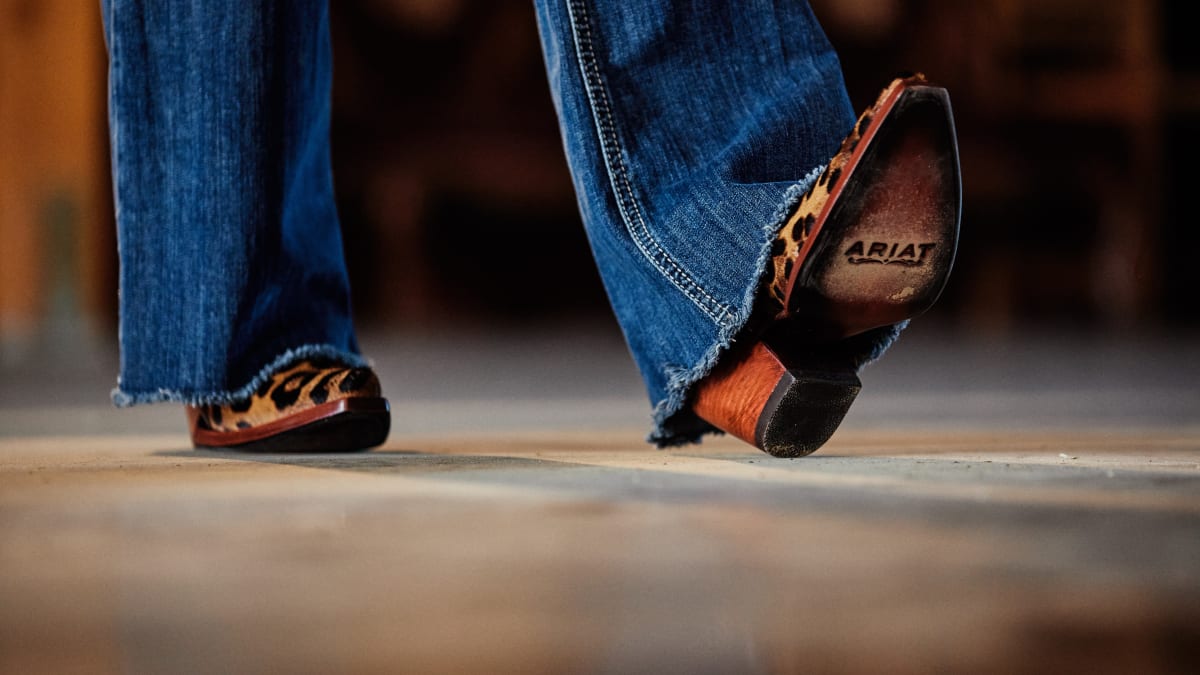
Fit Comes First
Line dancing requires constant movement, so cowboy boots that fit perfectly are non-negotiable. The right fit keeps you on your feet and comfortable through every shuffle, kick, and spin. Here’s what to look for:
- Snug heel fit: Your heel should slip slightly when walking but not when dancing.
- Toe room: Enough space to wiggle your toes without feeling cramped.
- Break-in period: Wearing your new boots for a few days before dancing will help avoid blisters.
Spotting Too-Tight or Too-Loose Boots
Here’s how to tell whether or not your boots are ready for long nights on the dance floor:
- Too Tight: Your toes press against the front of the boots, or the leather pinches the sides of your feet.
- Too Loose: Your heel lifts more than an inch when you walk, or your foot slides forward when you move.
- Just Right: Your toes have wiggle room, your heel slips slightly (but not too much), and the boot feels snug but not restrictive.
If you’re unsure about your size or fit, check out our step-by-step fitting guides: How to Fit Cowboy Boots and How to Fit Cowgirl Boots.
Boot Picks for Comfort and Fit:
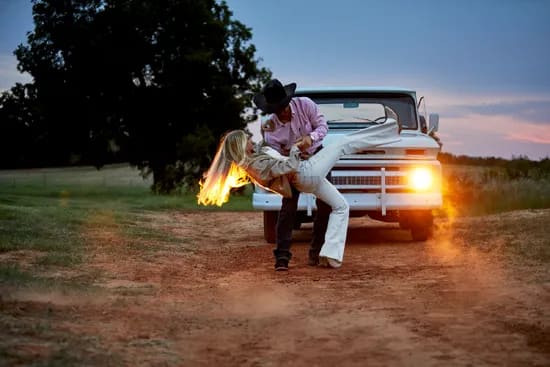
Safety Matters: Heel Height and Shaft Style
What is the best heel height for line dancing?
The best heel height for line dancing is low, between one and two inches. Higher heels make shuffling and turns harder, increasing the risk of slipping.
Can women wear ankle booties for line dancing?
Yes! Shaft height is flexible. Most dancers choose mid-to-tall shafts (10 inches or more), but ankle booties like the Dixon Bootie are a stylish, comfortable alternative for women who prefer a lighter option.
Toe Shape for Dancing Comfort
Are square-toe or pointed-toe boots better for line dancing?
When shopping for dancing cowboy boots, toe shape is more than just a style choice—it determines how comfortable you’ll feel after hours on the dance floor.
- Square Toe: Ideal for beginners and dancers who want extra room in their boots. Also great for wide feet or anyone who prioritizes all-night comfort.
- Round Toe: A balance between style and comfort. Works for most foot shapes and gives a traditional Western look
- Pointed Toe: Classic and stylish, but can feel tight if you’re dancing for hours. Better suited to shorter events or experienced dancers who know what fits them best.
Pro Shopping Tip: Slip on your cowboy boots and stand on your tiptoes. If your toes hit the end, size up or switch to a square toe. This little test saves you from sore feet later.
Boot Picks for Toe Comfort:
Beginner’s Buying Checklist: Choosing Your First Pair of Dancing Cowboy Boots
If you’re shopping for your first pair of line dancing boots, keep this checklist handy. It’ll help you find your sole mate before you hit the dance floor.
- Start with comfort: Look for cushioned insoles and flexible outsoles.
- Check heel height: Stick with 1–2 inches. This gives you stability for turns without slowing you down.
- Match your sole to your dance floor: Leather soles glide best indoors (think the Women’s Casanova Western Boot), while rubber soles grip better outdoors (like the Men’s Rambler Western Boot).
- Pick your toe shape wisely: Square and round toes give you more room to move and are ideal for beginners.
- Get the fit right: Your heel should slip slightly when walking, but your foot shouldn’t slide around. For step-by-step help, visit our How to Fit Cowboy Boots and How to Fit Cowgirl Boots guides.
Break-In Timeline: Getting Boots Dance-Ready
Even the best cowboy boots need a little time to mold to your feet. Here’s a realistic break-in plan so you don’t hit the dance floor too soon:
- Day 1–3: Wear them at home for 1–2 hours at a time with thick socks.
- Day 4–7: Increase to 3–4 hours. Bend your foot forward while seated to flex the leather.
- Day 8–10: Take them for a short dance session, but bring a backup pair just in case.
After 20–30 total hours, most boots feel fully broken in and ready for a full night of dancing.
Want more? Check out our full How to Break in Cowboy Boots guide for pro tips that make the process faster and more comfortable.
Why Ariat Boots Make the Perfect Partner for Line Dancing
Line dancing is about rhythm, balance, and stamina. Every shuffle, stomp, and spin puts pressure on your feet, ankles, and joints. That’s why the right cowboy boots aren’t just about style. They need to actively support movement. Ariat boots are designed with comfort and performance technologies that are more than a match for the demands of dancing.
Cushioning that lasts:
Line dancing involves repetitive steps and long periods on your feet. Ariat ATS® (Advanced Torque Stability) technology stabilizes your foot and supports your arch, which helps prevent fatigue when dancing for hours. Shock Shield® technology adds extra impact absorption at the heel, reducing joint stress during stomps and quick transitions. TekStep takes comfort further by adding an extra layer of toe-to-heel cushioning, so every step—on and off the dance floor—feels comfortable.
The right sole for the floor:
Different dance floors demand different traction. Smooth leather soles are ideal indoors, where gliding, sliding, and spinning are part of the choreography. They reduce friction so turns feel fluid. Outdoors, Duratread™ rubber outsoles provide traction on grass, gravel, or concrete, preventing slips during faster routines or when the surface is uneven. The flexibility of Duratread also helps the foot roll naturally, keeping movements controlled instead of clunky.
Lightweight feel:
Heavy boots can slow down footwork and increase fatigue, especially during fast-paced line dances. The Ariat Bantamweight™ sole dramatically reduces weight compared to traditional cowboy boot soles. It is flexible and responsive, so dancers can move quickly and effortlessly through long sets. Less weight on your feet translates directly to more energy and quicker recovery between songs.
FAQs About Line Dancing Boots
Can you line dance without cowboy boots?
Yes, but cowboy boots enhance the look and feel of the experience. Any well-fitting shoe with good traction works, but Western boots add authenticity to your look.
What type of cowboy boots are most comfortable for beginners in line dancing?
Beginners usually do best with lightweight boots that have a cushioned insole, a square or round toe for extra space, and a low heel for stability.
How do I break in cowboy boots before line dancing?
Wear your boots for short periods around the house, pair them with thick socks, and flex the leather gently. This softens the boot and molds it to your foot, preventing blisters on the dance floor.
What shaft height is best for line dancing boots?
Most dancers choose shafts around 10–12 inches in height, which provide support without restricting movement. Shorter shafts or booties are also great for anyone who wants a lighter option.
Do cowboy boots need special insoles for dancing?
Some dancers choose to add cushioned or gel insoles for extra support, but with Ariat boots, this is rarely necessary. Every pair in our line is built with comfort technology designed for long hours on your feet. Our ATS® technology stabilizes your foot and supports your arch, while Shock Shield® reduces impact so you can dance longer without soreness. For those who need or prefer a more personalized fit, removable footbeds make it easy to swap in personal orthotics.
Final Thoughts
Here’s the truth: the best cowboy boots for line dancing aren’t just about looking sharp (though, let’s be honest, that part is fun). They’re about keeping your feet happy when the DJ keeps calling for “just one more.” They’re about spinning without slipping, stomping without pain, and still wanting to stay out after the band plays their last song.
Find a pair that fits right, feels good, and matches your vibe, whether that’s classic, flashy, or somewhere in between. Because at the end of the night, nobody remembers the exact heel height. They remember if you were out there smiling, shuffling, and kicking it to the beat.
So grab your boots, turn up the music, and dance until the neon lights go out.








